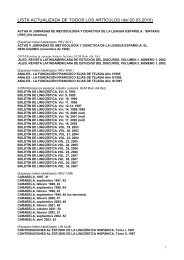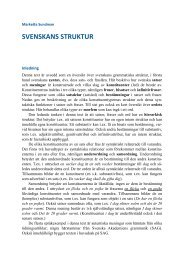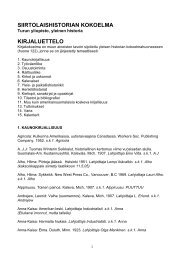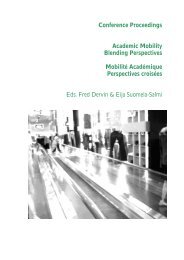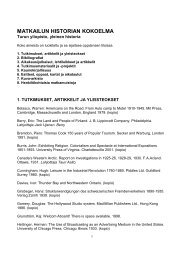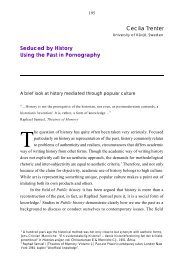Style sheet (pdf)
Style sheet (pdf)
Style sheet (pdf)
Create successful ePaper yourself
Turn your PDF publications into a flip-book with our unique Google optimized e-Paper software.
Biblical references should give book, chapter and verse (you need not refer to the Old<br />
or New Testament):<br />
Ecclesiastes 12: 1.<br />
5.5.6 Indirect Citations<br />
An indirect citation (sometimes referred to as a secondary source citation) is a work to<br />
which you have access only indirectly, through a citation in the source you are<br />
using. These should be avoided because they show you have not read the original<br />
work. For instance, suppose you read a text by Sue Vice in which she discusses the<br />
work of Mikhail Bakhtin. If you want to quote Bakhtin, you should get hold of the<br />
original text by him and not take the quotation from Vice. When no alternative is<br />
available or the original text is in a language you do not speak, you should provide<br />
as much information about the original text (the full name of the original author, the<br />
full title of the book or article, and the year of publication) as you possibly can in the<br />
running text. The actual reference is to the source you have used:<br />
(Bakhtin in Vice 1997: 32).<br />
6 The List of References<br />
Golden Rules for Reference Lists<br />
Be consistent<br />
Provide sufficient information for the interested reader to trace your sources<br />
Please note that the punctuation used in this department has been simplified and<br />
adapted from The Chicago Manual. The author/date references in the running text<br />
refer the reader to the full entry, given in the “References” section at the end of the<br />
work. Entries are given in alphabetical order by first author. You list your primary<br />
sources (your data or other research material) and your secondary sources (scholarly<br />
works referred to in your text) separately. Typically, the primary sources for a paper<br />
on a literary topic would consist of the novels, poems and/or plays discussed; those<br />
for a work on a linguistic topic would consist of the corpus or text(s) used. Secondary<br />
sources are the scholarly / analytical works that analyse or discuss the primary<br />
sources.<br />
The following instructions show the order in which the different items of<br />
information are presented and how the entry is punctuated. Examples of all major<br />
12




